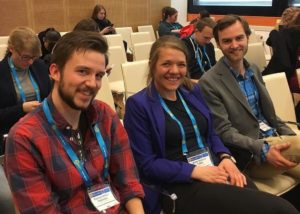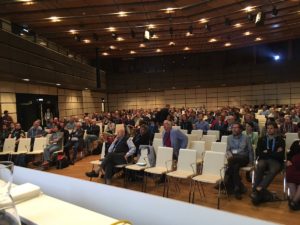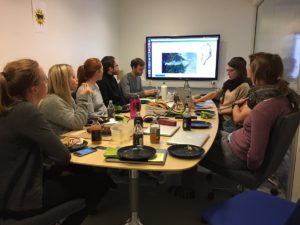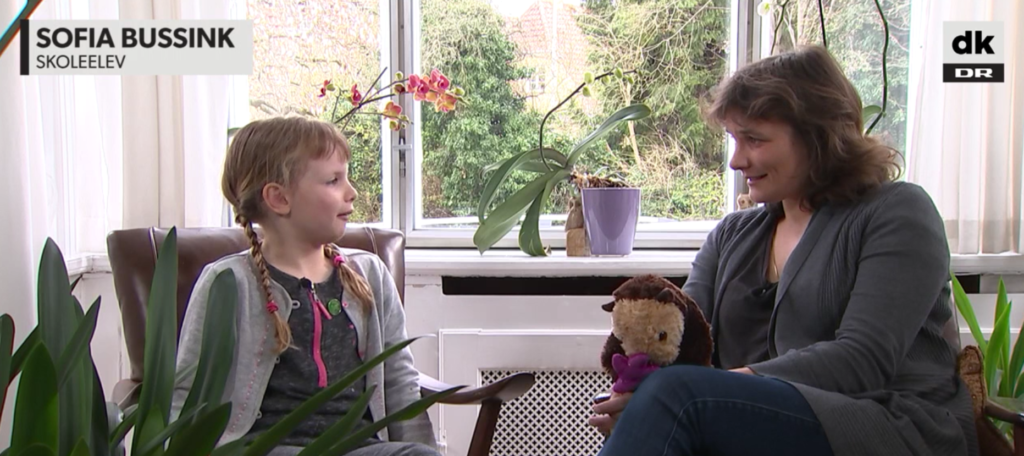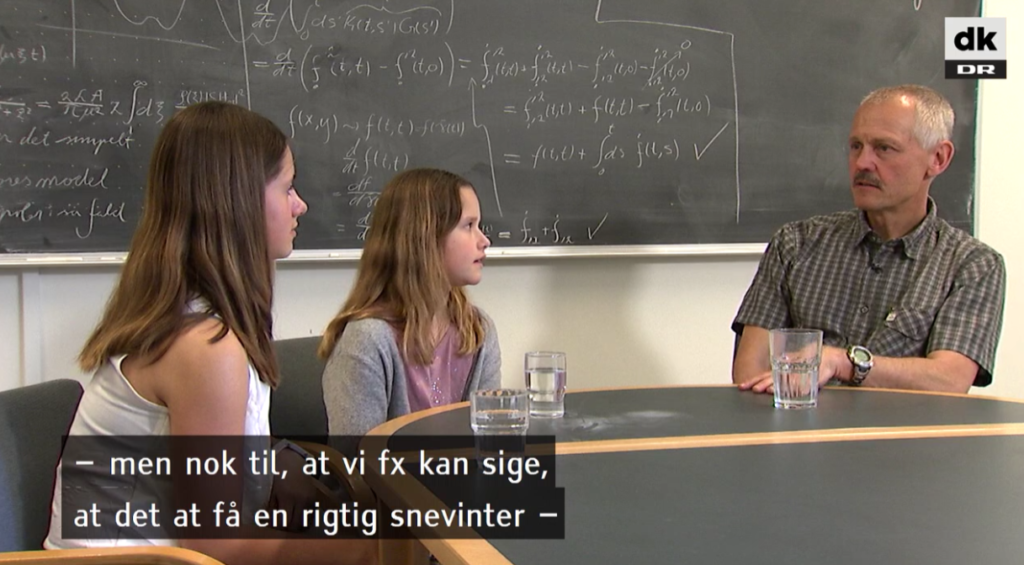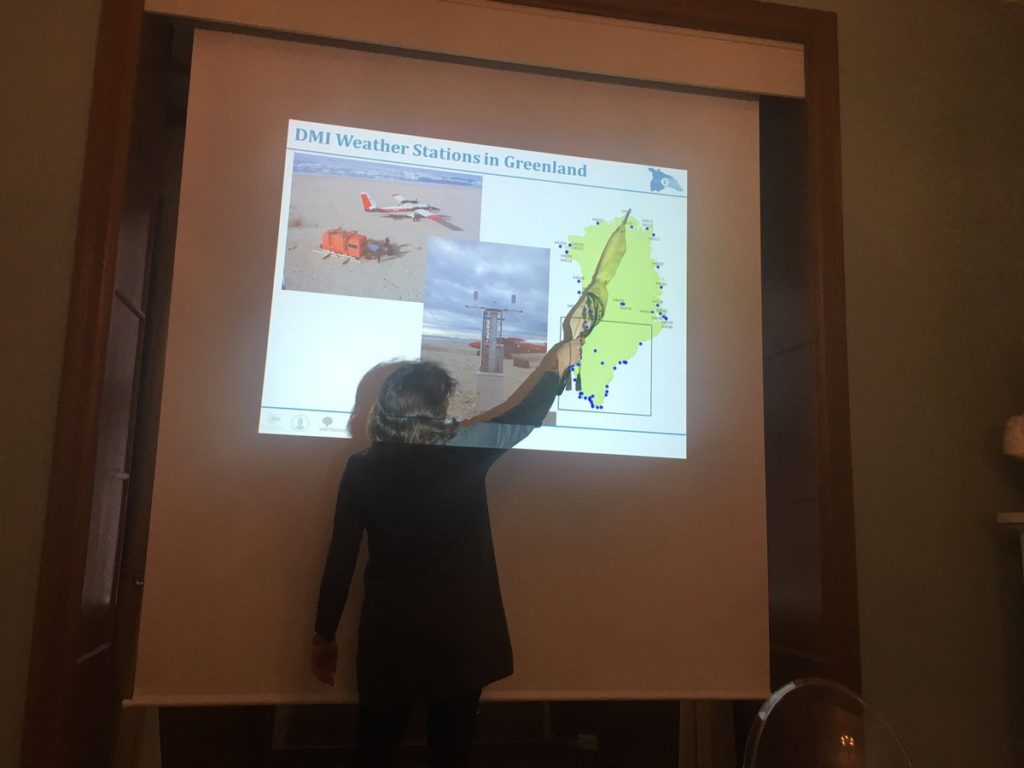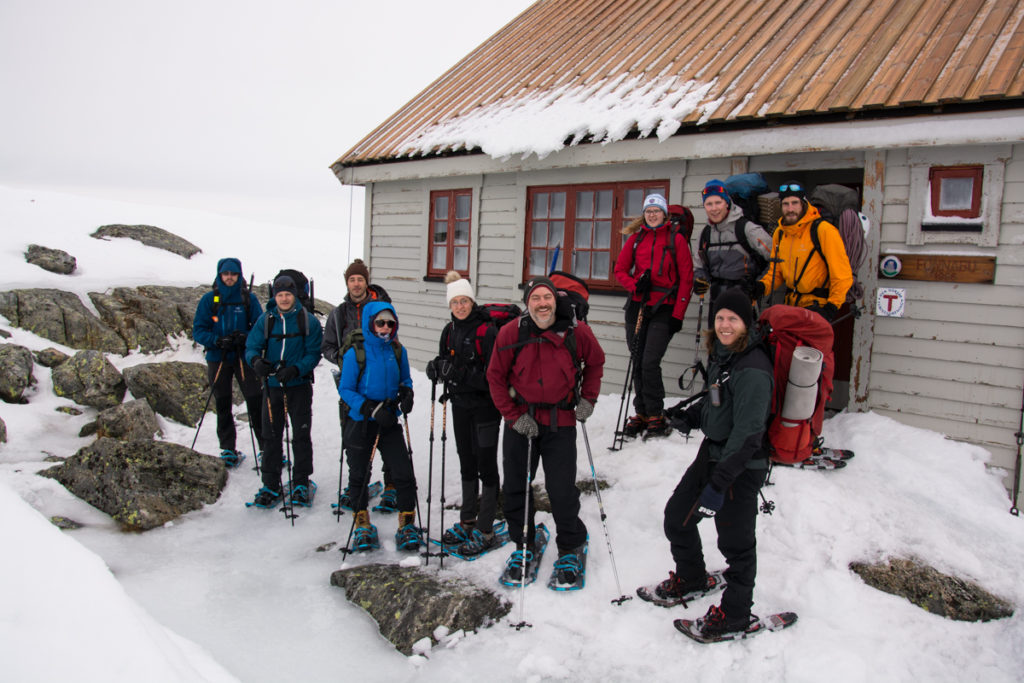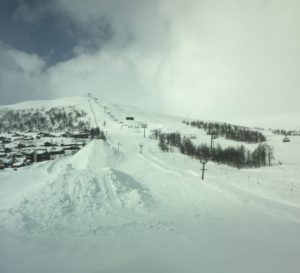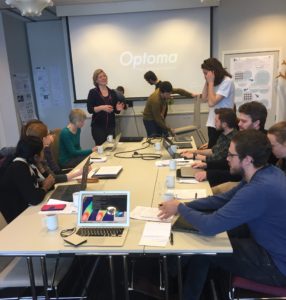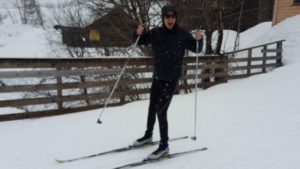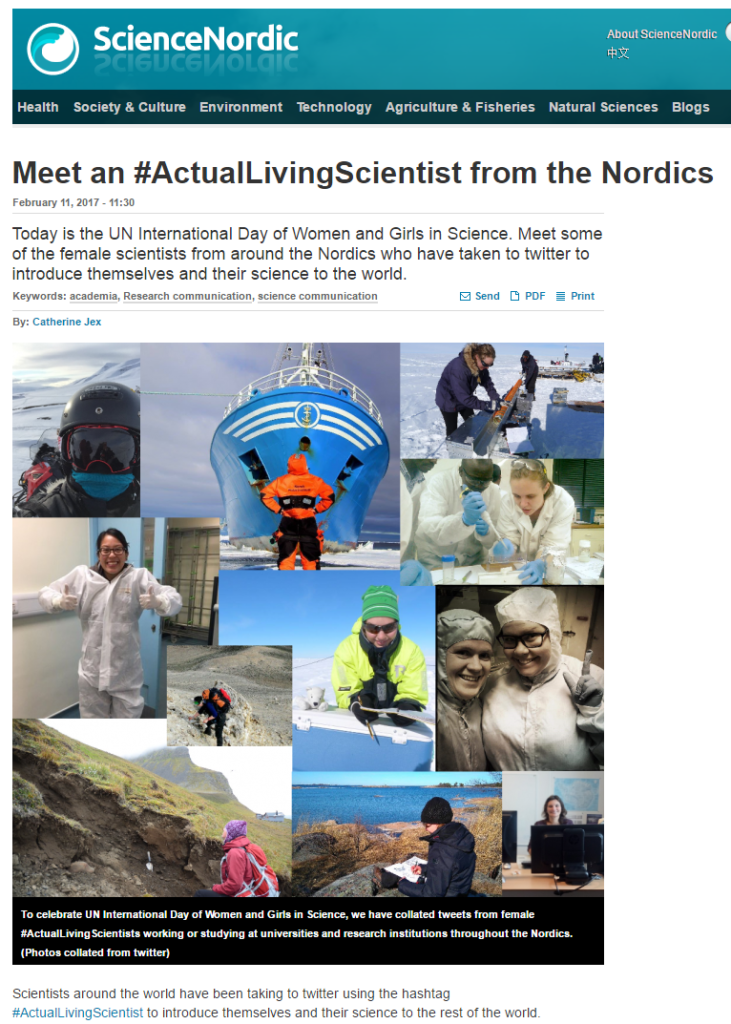Ice core research is one of the key research areas of the Ice2ice project. A great number of scientists from the ice2ice project are this summer participating in the drilling of a new ice core. This ice core, the EastGRIP core is expected to contribute to the understanding of ice streams and their role in future sea level rise.
By: Anne-Katrine Faber, Kerim Nisanciouglu and Helle Astrid Kjær
Surrounded by nothing but snow and ice, the ice core drilling camp EastGRIP is located in the northeastern interior of the Greenland ice sheet. Here up to 35 people work towards the same goal, to drill and analyze the EastGRIP ice core.
The ice cores are drilled and analyzed in trenches, “the ice caves”, and approx. 7 meters below the snow surface. Here, far away from the sunlight, the ice caves function as a natural freezer and creates perfect conditions for drilling, logging, cutting and analyzing ice cores.
The entrance to the ice core trenches (Picture: Kerim Nisanciouglu)
EastGRIP is located on top of more than 2,5 km of ice. The ice core is not drilled as one single long core from surface to bottom, but consist of a large number of 2-meter core sections. In order to keep track of the depth of all of these ice core pieces, logging of the ice cores are crucial. Helle Astrid Kjær is one of the ice core loggers from the ice2ice project this year.
Each time the ice core drillers have drilled a new ice core section, the ice core loggers take over and make sure that the ice core sections are well matched and logged. Helle Astrid Kjær explains:
“Each 2 meter ice core section has to be matched well with the previous ice core. This way we know the total depth as well as orientation of each ice core section. The length of the new piece is to be very accurately recorded. Further we mark 55 cm sections, each 55 cm section is called an ice core bag and gets a number, before storing the core in the core buffer. The core is cut prior to storage into 3 bags length (1.65 m) and rest until the science trench takes over the processing”’
Ice2ice Helle Kjær and Korean colleague Khangyuan pointing towards bag 1000, which was logged, the in the end of June: (Photo: Helle Astrid Kjær)
When the ice core is logged, the next task is to cut and process the core. This is done in the “Science trench”. Kerim Nisanciouglu & Sarah Berben spent most of their time underground in the Science trench of EastGRIP with a great team of colleagues from Denmark, Italy and China processing the ice cores. This included, cutting, describing, cleaning, measuring and packing the 400 meters of ice extracted this season as well as the firn core extracted from the surface in 2016.
Kerim Nisanciouglus main task was measuring Electrical Conductivity (ECM) on a clean surface of the archive piece before packing. “During the weeks we found multiple volcanic events including notable ones such as Laki, Tambora and Krakatoa. We also tried to follow historical events and music (!) from the period we processed. The latter proved to be hard once we passed 1200AD, but it was a great journey through time with lots of fun discussions throughout the climate record.”
Kerim in the Science Trench showing ECM measurements (Picture: Kerim Nisanciouglu)
Sarah Berben took care of another important study of volcanic events, the processing of the core for Tephra measurements. These measurements allow is to study ash particles from volcanic events located in the ice core. Later, comparison of ice cores and ocean sediments cores creates possibilities for synchronization of the two different types of climate archives.
The team of Kerim and Sarah processed a record 70 bags during one day (!) and managed to finish processing down to about 400 m several days before time. Below this point the ice started to become more fragile as we approached the brittle zone and it was decided to sore and let the remaining ice rest before processing next year.
 The processing team of Kerim and Sarah celebrating their achievements in the Science Trench (Picture: Kerim Nisanciouglu)
The processing team of Kerim and Sarah celebrating their achievements in the Science Trench (Picture: Kerim Nisanciouglu)
Far away from the cold temperatures in the science trench, Anne-Katrine Faber were sampling snow from the surface. As part of the surface science project, she contributed to the ongoing work of understanding how the water isotopes in the snow and air are interacting. This including daily measurements of snow at different depth, snow height measurements in the “bamboo forest” and monitoring of the isotopic composition of the water vapor in the atmosphere at different heights above the snow surface.
Anne-Katrine digging holes for snow pack measurements and transporting the samples back using skis and a sled. (Photo: Anne-Katrine Faber)
Whether you normally work with ocean, atmosphere or ice is not relevant when you are at EastGRIP. Everybody works towards the same common goal, to drill and analyze an ice core. During this work, scientific discussions and collaborations happens spontaneous, probably as a result of the mix of modelers and experimentalist and their different research interests.
A view of inside of the Dome during dinner time (Picture: Anne-Katrine Faber)
Overall the Ice2Ice scientists that got the privilege to join EastGRIP this summer got a fieldwork experience that included scientific achievements, beneficial discussions and last but not least a great del of fun.
A view of the EastGRIP camp and the flag line showing the many different nations present in camp at the given time. (Picture: Kerim Nisanciouglu)
Links for more information:
EastGRIP website: http://s.eastgrip.org/
Watch this video: https://vimeo.com/173730939
Facebook: https://www.facebook.com/EastGRIP/
Instagram: https://www.instagram.com/egripcamp/ or #EastGRIP and #EGRIP





